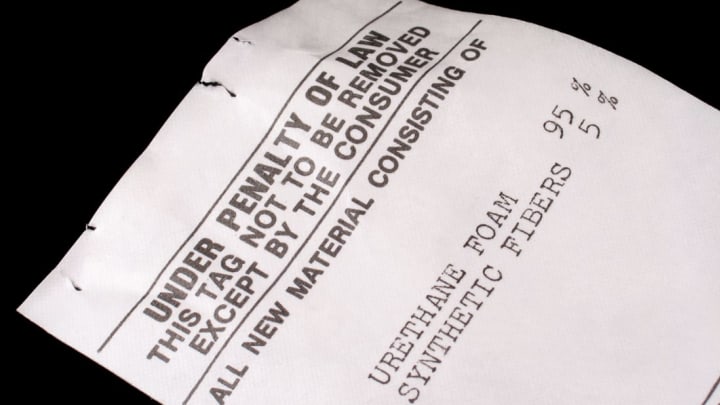At some point, most of us have heard that we’re not supposed to remove the tags from our mattresses, under penalty of law. Most of the tags even say something like "It is unlawful to remove this tag!" The tags and the bold act of tearing them off have become a kind of jokey cultural shorthand for oppressive, yet trivial, government regulation and rebellion against it. Jay Leno has joked that his mom is so law-abiding that she checks her tags once a month, and Woody Allen parodied the tags with a story about two drifters who break into a home and slash them off.
You can go ahead and cut the tag off without fear of jackbooted mattress police kicking in your door and hauling you off to the gulag, though. The tag's stern warning is there to protect you, the end user: it's the removal of the tag before the mattress gets to the person that’s going to sleep on it that’s illegal.
Why So Serious?
Take a look at your mattress tag and you’ll see that there’s a lot more on it than just the “don't remove me” warning. The purpose of the tag is to assure consumers that they’re buying a new, never-been-used product and to let them know exactly what’s inside it. The need for this protective label arose in the early 20th century, amid a boom in consumer protection regulations. At the time, mattresses were often constructed with some unsavory stuffing — horse hair, corn husks, food waste, old rags, newspaper, and whatever else a manufacturer could come by were regularly shoved inside. Consumers would never see the stuffing, so no harm, no foul, right? Not really. Some of this stuff harbored bacteria and household pests that gave unwary consumers a not-so-restful slumber.
The government tackled the problem by requiring mattress manufacturers to affix tags to their products that clearly defined their contents. Consumers could then make informed decisions and steer clear of mattresses stuffed with dangerous or gross materials. Listing the “ingredients” right on the mattress put the dirty rag guys at a distinct disadvantage in the marketplace. So to get around the problem, having fulfilled their legal obligation to add the tag, some manufacturers simply tore it off before shipping to retailers. Elsewhere, salesmen ripped them off of slow-moving products to help sales.
The government countered with a new regulation. Tags now had to have the do-not-remove warning, and federal regulations made it unlawful to “remove or mutilate, or cause or participate in the removal or mutilation of, prior to the time any textile fiber product is sold and delivered to the ultimate consumer, any stamp, tag, label, or other identification required” on them. “Any person violating this section,” the regulation continues, “shall be guilty of an unfair method of competition, and an unfair or deceptive act or practice, under the Federal Trade Commission Act.”
The move deterred dishonest mattress dealers, but also confused more than a few consumers, who dutifully left the tags on for fear of prosecution. In recent years, the feds and many state governments have eased the minds of law-abiding citizens by amending the mattress laws so the tags read “this tag shall not be removed except by the consumer.”
So, go ahead, tear that sucker off and sleep easy.
